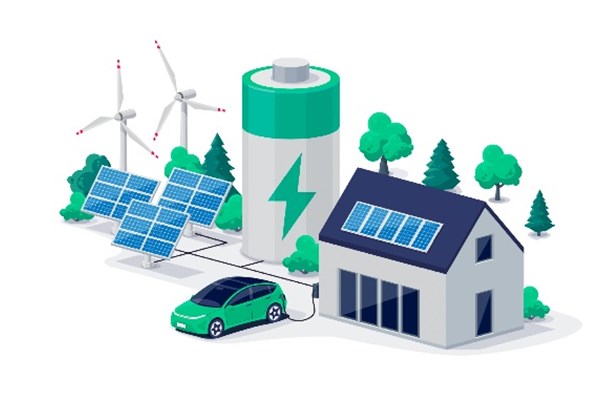Resilience trending as part of Hawaii’s clean energy discussions
Feb 28, 2022

By Samantha Ruiz, Director of Regulatory Affairs, Ulupono Initiative
As one of the most geographically isolated places on Earth, Hawaii must prioritize its own resilience, from powering our homes to putting food on the table. The realities of supply chain volatility, climate change impacts, and other external factors make resilience all the more important.
A resilient electric system is especially important for Hawaii when compared to other places. Given the lack of access to a larger grid and our continued dependence on imported fossil fuel, the reliability of Hawaii’s electric system is vulnerable to extreme weather events, cyber attacks, or unanticipated outages caused by aging infrastructure. The good news is that Hawaii’s regulators, the electric utilities, and community leaders understand the importance of this issue, and are centering resilience in discussions about the state’s future electricity system. Below are three examples of how resilience is emerging as a topic of discussion in the state’s energy transition:
Integrated Grid Planning
In 2018, Hawaiian Electric embarked on a new planning process, more commonly known as the Integrated Grid Planning (IGP) process. The intent of IGP is to identify the most optimal and cost-effective energy portfolio to affordably move Hawaii toward a reliable, resilient clean energy future. To increase the opportunity for stakeholder/community engagement, Hawaiian Electric established several different Working Groups, comprised of different stakeholders, to ensure a renewable energy plan that is customer-centric and represents various community perspectives throughout the islands.
The Resilience Working Group was formed to identify and prioritize potential threat scenarios to the grid, key customers, and infrastructure needs following a severe grid outage, and provide specific recommendations related to resilience to inform the broader IGP process.
As an engaged intervenor in Hawaiian Electric’s IGP process, Ulupono participated in a number of the Resilience Working Group discussions of the electric utility’s perspective on resilience and how to best achieve it for Hawaii. We are optimistic that this process will result in a more comprehensive renewable energy plan for Hawaii, one that considers potential grid impacts, and prioritizes grid and customer actions that will enable Hawaii’s electric system to withstand the effects of severe events that compromise the state’s access to electricity. Read more on Hawaiian Electric’s Integrated Grid Planning web page.
Microgrid Services Tariff Regulatory Proceeding
Spurred by Act 200 (SLH 2018), the Hawaii Public Utilities Commission (PUC) opened a regulatory proceeding to establish a microgrid services tariff to increase resilience and reliability of Hawaii’s electric system. Act 200 concluded that “microgrids can provide valuable services to the [electricity grid], including energy storage and demand response … and the use of microgrids would build energy resilience into our communities, thereby increasing public safety and security.”
Following a two-year process, where stakeholders collaborated with the electric utility to design a tariff that would serve the intent of Act 200, the PUC approved a microgrid services tariff. The approved tariff is specific to microgrids providing energy generation during emergency situations, and identifies two types of microgrids that are intended to provide customers interested in developing a microgrid with more choices regarding the design of their system.
The second phase of the proceeding, initiated in September 2021, is focused on expanding the microgrid services tariff to microgrids that would like to operate in non-emergency situations, emphasizing the need for discussion on different grid services that can be provided by microgrids to support the electric system during normal operations.
In January 2022, the PUC hosted a technical conference to discuss priority topics for Phase 2. These topics included: harmonizing with other programs’ grid service mechanisms, addressing customers with existing grid services agreements, recognizing resilience services and compensation (including societal and environmental value), identifying utility compensation (e.g., standby charges and exit fees), and considering customer protection. Read more on the PUC’s web page for Docket 2018-0163.
Hawaiian Electric’s Hybrid Microgrid Map
Building on the momentum generated by the PUC’s approval of a microgrid services tariff, Hawaiian Electric is also in the midst of developing a hybrid microgrid map to help identify areas on Oahu that are optimal for microgrids and will support a more resilient electric grid. The Hybrid Microgrid Map is one of 11 initiatives selected as part of the U.S. Department of Energy’s inaugural Energy Transitions Initiative Partnership Project (ETIPP).
Watch for the beta version of the map going live as early as July 2022. In the meantime, read more in this related Hawaii Public Radio story.

